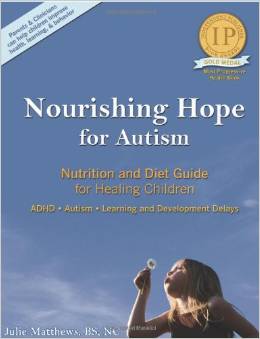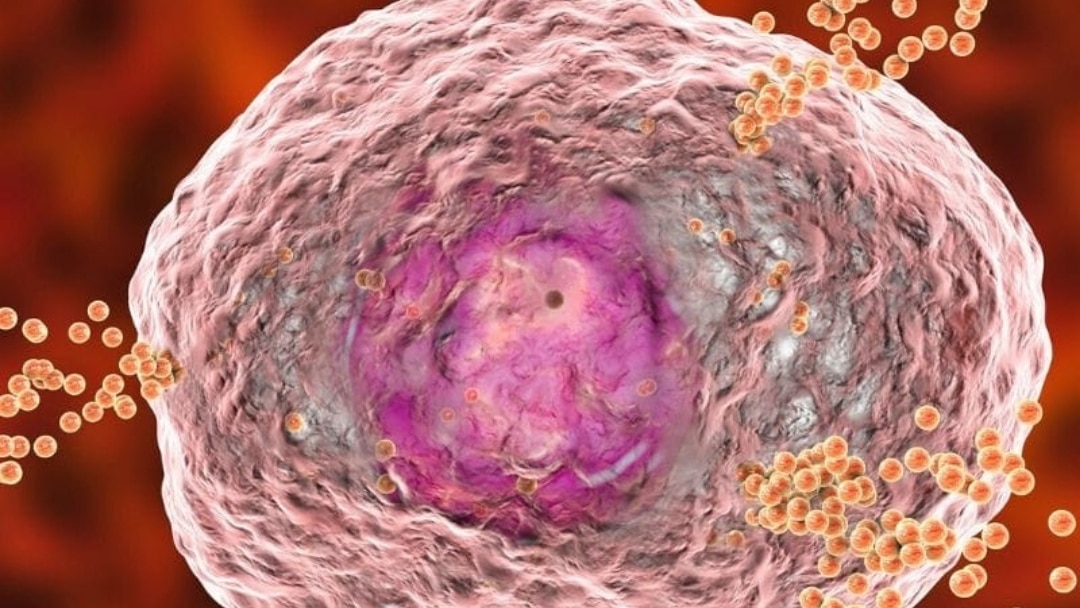What Is the Low-Histamine Diet?
Histamine is a type of neurotransmitter known as an amine that is most well known for its role in itchiness, swelling and other allergic symptoms. It is not typically a natural component of food, although some foods naturally contain high amounts of it. Instead, it is usually created as a byproduct of some amino acids by certain kinds of bacteria, usually in the fermentation, curing or aging processes.
A low-histamine diet may not typically be the first diet that is used for reversing chronic health symptoms. Instead, an elimination diet or a gluten-free, dairy-free diet are usually the first diets tried, and we agree with this approach. The low-histamine diet is often a secondary, refining diet that is explored if symptoms continue to persist. Having your child follow it can help to reduce inflammation and lowering exaggerated immune-system responses.
Because of histamine’s ability to exacerbate allergic and immune responses, a low-histamine diet can be helpful in reducing symptoms of numerous autoimmune, gastrointestinal and neurological conditions such as:
What’s Excluded in a Low-Histamine Diet?
Foods that contain high levels of histamines are excluded in this diet. Foods that are fermented, cured or aged are almost always excluded. In addition, there are unprocessed, natural foods that are also high in histamine. High-histamine foods include, but are not limited to:
- Avocado
- Sauerkraut
- Kim chee
- Pickled vegetables
- Other fermented foods
- Aged cheeses
- Most yogurt
- Buttermilk
- Chocolate
- Citrus fruit
- Eggplant
- Tomatoes and tomato sauce
- Yeast-containing foods
- Pineapple
- Pork
- Processed, cured or smoked meats and fish
- Soy sauce and tamari
- Spinach
- Tofu and other fermented soy
- Vinegar
- Beer
- Wine
- Chicken liver
- Strawberries
- Leftover foods
- Slow-cooked foods
The inclusion of leftover foods may cause a double take, but it makes more sense when you know that certain bacteria produce histamine as a byproduct. The longer these bacteria remain through fermentation or the aging process – which includes leaving foods as leftovers, the more histamine there will be.
Does My Child Need to Follow the Low-Histamine Diet Forever?
While the elimination of high-histamine foods can control symptoms, it isn’t reasonable to think that a child should avoid these foods for the rest of their life. The good news: This is probably not a lifelong diet for your child IF you continue to work towards healing the gastrointestinal system, detoxing the liver and removing or remediating potential triggers.
Heal the Gut
Because histamine is by and large created by certain types of bacteria, it is important to correct gut dysbiosis so that there are less of these bacteria present. Removing histamine-containing foods and other inflammatory foods can be an important step, but bringing the gastrointestinal system back into balance is the ultimate goal. Gut-healing diets such as the following can help:
- Body Ecology Diet (BED)
- Gut And Psychology Syndrome (GAPS) diet
- Paleo/primal diet
- Specific Carbohydrate Diet (SCD)
Detox the Liver
A properly functioning liver is necessary for the breakdown of histamine. Therefore, a poorly functioning liver may lead to histamine sensitivity. Naturopaths and homotoxicologists are well versed in detoxing the liver safely and gently for your child.
Remove or Remediate Potential Triggers
Chronic infections and exposures can continue to trigger histamine sensitivity. Be sure to look into:
- Hidden infections such as Lyme or PANS/PANDAS
- Stress
- Mold or biotoxin exposure
- EMF
- Pollution
- Other triggers
If, after following these steps, histamine intolerance continues to be a problem, we recommend working with a practitioner that’s knowledgeable about Mast Cell Activation Syndrome. A naturopath or functional-medicine practitioner is a good starting point.
Still Looking for Answers?
Visit the Epidemic Answers Practitioner Directory to find a practitioner near you.
Join us inside our online membership community for parents, Healing Together, where you’ll find even more healing resources, expert guidance, and a community to support you every step of your child’s healing journey.
Sources & References
Afrin, L.B., et al. Often seen, rarely recognized: mast cell activation disease–a guide to diagnosis and therapeutic options. Ann Med. 2016;48(3):190–201. doi:10.3109/07853890.2016.1161231.
Afrin, L.B., et al. Mast cell activation disease: An underappreciated cause of neurologic and psychiatric symptoms and diseases. Brain Behav Immun. 2015;50:314–321. doi:10.1016/j.bbi.2015.07.002.
Campbell, et al. Mechanisms of Allergic Disease – Environmental and genetic determinants for the development of allergy. Clin Exp Allergy. 2015
Della Giustina, A., et al.. Vitamin D, allergies and asthma: focus on pediatric patients. World Allergy Organ J. 2014;7(1):27
Feehley, T., et al. Healthy infants harbor intestinal bacteria that protect against food allergy. Nature Medicine. 2019 Jan 14.
Frieri, M. Mast Cell Activation Syndrome. Clin Rev Allergy Immunol. 2018;54(3):353–365. doi:10.1007/s12016-015-8487-6.
Frieri, M., et al. Mast cell activation syndrome: a review. Curr Allergy Asthma Rep. 2013;13(1):27–32. doi:10.1007/s11882-012-0322-z.
Gupta, R.S., et al. The Public Health Impact of Parent-Reported Childhood Food Allergies in the United States. Pediatrics. 2018 Dec;142(6). pii: e20181235.
Hamilton, M.J. Nonclonal Mast Cell Activation Syndrome: A Growing Body of Evidence. Immunol Allergy Clin North Am. 2018;38(3):469–481. doi:10.1016/j.iac.2018.04.002.
Ly, N.P., et al. Gut microbiota, probiotics, and vitamin D: interrelated exposures influencing allergy, asthma, and obesity? J Allergy Clin Immunol. 2011;127(5):1087-94; quiz 95-6
Maksimova, O.V., et al. [Intestine microbiota and allergic diseases]. Zh Mikrobiol Epidemiol Immunobiol. 2014(3):49-60.
Petra, A.I., et al. Spectrum of mast cell activation disorders. Expert Rev Clin Immunol. 2014;10(6):729–739. doi:10.1586/1744666X.2014.906302
Prescott, S.L. Early-life environmental determinants of allergic diseases and the wider pandemic of inflammatory noncommunicable diseases. J Allergy Clin Immunol. 2013;131(1):23-30.
Sánchez-Pérez, S. et al. Intestinal Dysbiosis in Patients with Histamine Intolerance.
Nutrients. 2022 Apr 23;14(9):1774.
Sánchez-Pérez, S. et al. The dietary treatment of histamine intolerance reduces the abundance of some histamine-secreting bacteria of the gut microbiota in histamine intolerant women. A pilot study. Front Nutr. 2022 Oct 21;9:1018463.
Schink, M., et al. Microbial patterns in patients with histamine intolerance. J Physiol Pharmacol. 2018 Aug;69(4).
Schnedl, W.J., et al. Histamine Intolerance Originates in the Gut. Nutrients. 2021 Apr 12;13(4):1262.
Son, J.H., et al. A Histamine-Free Diet Is Helpful for Treatment of Adult Patients with Chronic Spontaneous Urticaria. Ann Dermatol. 2018 Apr;30(2):164-172.
Terwee, C.B. Succesful treatment of food allergy with Nambudripad’s Allergy Elimination Techniques (NAET) in a 3-year old: A case report. Cases J. 2008 Sep 19;1(1):166.
Tsabouri, S., et al. Modulation of gut microbiota downregulates the development of food allergy in infancy. Allergol Immunopathol (Madr). 2014;42(1):69-77.
Vassilopoulou, E., et al. The Impact of Food Histamine Intake on Asthma Activity: A Pilot Study. Nutrients. 2020 Nov 5;12(11):3402.
Yang, M.T., et al. Attention-deficit/hyperactivity disorder-related symptoms improved with allergic rhinitis treatment in children. Am J Rhinol Allergy. 2016 May;30(3):209-14.
Resources
Cutler, Ellen. Live Free from Asthma and Allergies: Use the BioSET System to Detoxify and Desensitize Your Body. Celestial Arts, 2007.
Dumke, Nicolette. The Low Dose Immunotherapy Handbook: Recipes and Lifestyle Tips for Patients on LDA and EPD Treatment. Allergy Adapt, Inc., 2007.
Matthews, Julie. Nourishing Hope for Autism: Nutrition and Diet Guide for Healing Our Children. Healthful Living Media, 2008.




